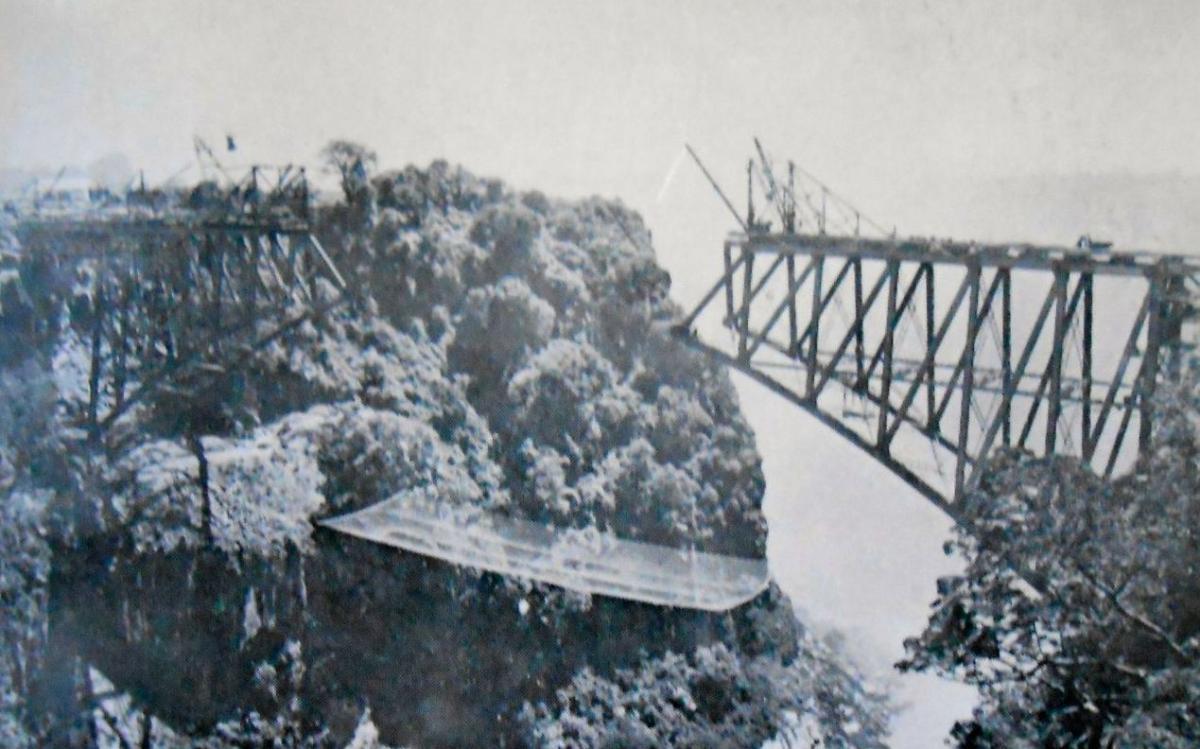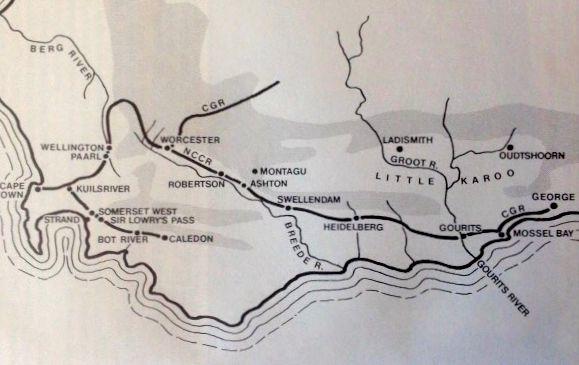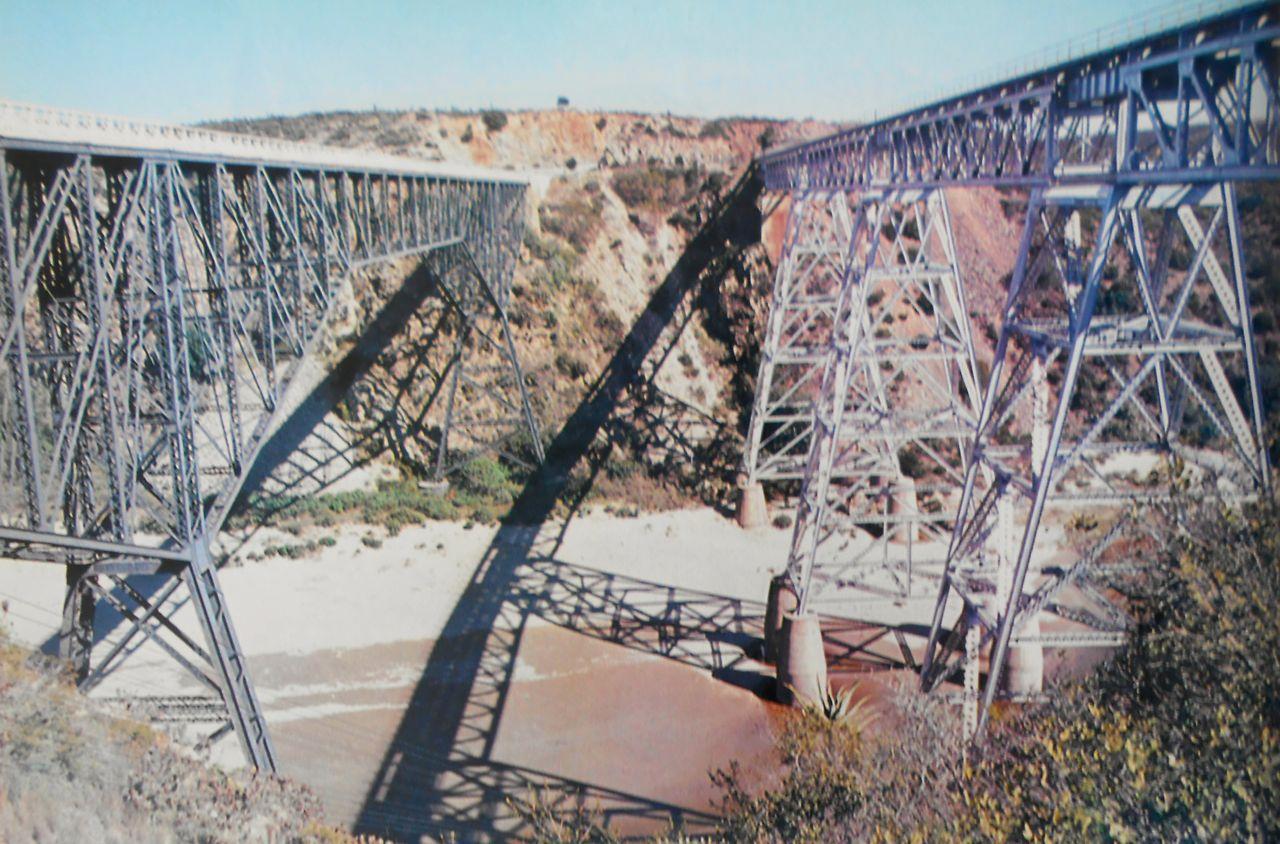
Disclaimer: Any views expressed by individuals and organisations are their own and do not in any way represent the views of The Heritage Portal. If you find any mistakes or historical inaccuracies, please contact the editor.
In the previous installment of the History of Southern African Railways series Peter Ball looked at the role of the railways during the South African War. In this piece he looks at post war reconstruction, the completion of various lines and the contribution of the railways to political union in South Africa.
By the time of the outbreak of the Boer War the railways of South Africa had revolutionised transportation and made possible speedy links between the interior and the coastal ports. The War brought any new railway construction to a virtual standstill, as both labour and materials were commandeered for the war effort, as the British army moved north to take over the Boer Republics. In hindsight it would have been far better all round had the Middelburg Peace Talks, between Louis Botha and Lord Kitchener (28th February 1901) succeeded and concluded the War. It would have saved many lives and would have forestalled further damage to the farms on the Highveld. The opportunity of a settlement was missed and the War dragged on for another fifteen months, finally ending when the Boer delegates at Vereeniging voted in favour (54 to 6) of Kitchener’s peace, on the 31st May 1902. It was very much a case of living to fight another day, but that is another story.
The aim here is to tell of the interim period between the War’s end and the Act of Union as pertaining to the existing railways prior to the establishment of the South African Railways (SAR), which coincided with the Union of the four colonies - the Cape, Natal, Orange River and Transvaal, on 31st May 1910; exactly eight years after the War had ended.
The War had wreaked havoc across large parts of the former Boer Republics and to lesser extent to parts of the Cape and Natal. The Railways were pivotal in getting the reconstruction of the colonies underway and the first steps were to repair the war damage and then restore the smooth operation of the various lines. In the Orange River Colony and the Transvaal, the Imperial Military Railways had given way to a civilian administration, called the Central South African Railways (CSAR) and by the time the two colonies had gained self rule (1908), a customs union and railway agreement had been signed (under British supervision) with the Cape and Natal, which was the precursor to eventual political unification; a long held dream since the days of Sir Bartle Frere (1877).
The expansion of the railway network, which entailed the completion of lines that were halted due to the War, was once again pursued. One in particular is worthy of mention as it was privately built to exploit the commercial potential of the region due east of Cape Town and was known as the New Cape Central Railway (NCCR). Prior to the War it had already reached Swellendam (on 12th April 1899) by way of Worcester, Robertson and Ashton and had been granted authority to extend further eastwards to Riversdale. George Pauling was awarded the contract and although work commenced in 1899, it soon ground to a halt as railway materials were commandeered to keep the lines to the north in repair as the British army advanced. There was another danger to the NCCR in that the Cape Government Railways (CGR) were pushing through their own line to Swellendam via Sir Lowry’s Pass and Caledon, in direct competition, however this line was never completed and finished at Protem (from the Latin “pro tempore” - for the time being) some 23 miles (37 km) short of Swellendam. The NCCR reached Riversdale on 19th February 1903 after floods in 1902 were responsible for several wash aways which delayed its completion. Mossel Bay was the final objective of the NCCR and a link up with the CGR line coming down from George was made at Voorbaai, on 25th July 1907.
Mossel Bay was the final objective (Early Railways at the Cape)
The major civil engineering feat on the line happened to predate the railway by fifteen years. It was the road bridge over the gorge of the Gouritz River, which was opened for wagon traffic in March 1892. The bridge was of structural steel lattice girder construction having a central span of 420 feet and end spans of 140 feet, with a height above the river bed of 200 feet (61 metres). It was fabricated in England by the Derby firm of Andrew Handyside and shipped to the Cape. The bridge was designed by Sir Benjamin Baker, the renowned bridge engineer, famed for his Forth Railway Bridge in Scotland opened in 1890. Interestingly it doubled as a road/rail bridge until 1931, when a new rail bridge was built (to take newer and heavier trains) and it remained a road bridge until 1978 when it was replaced by a modern concrete bridge. It still stands today between the two later bridges and is used as a platform for Bungee Jumping!
Railway bridge and old road bridge across the Gourits River (Early Railways of the Cape)
Going northwards to the Transvaal the cut-off line between Klerksdorp (CSAR) and Fourteen Streams (CGR) on the Vaal River was completed on the 4th April 1906, which gave a direct route from the Rand to Cape Town, via Kimberley.
Further north still, Bulawayo, in Southern Rhodesia (now Zimbabwe) had already been reached by late 1897 (soon after the Matabele uprising) and was to become a junction for the line going eastwards to Salisbury (on 1st June 1902) and for the line going northwards to the Wankie coalfields (on 1st December 1903). The section of line between Wankie and the Victoria Falls was then opened to traffic on the 20th June 1904. The Victoria Falls Bridge over Zambesi Gorge was completed and opened to traffic on the 12th September 1905. It was Cecil Rhodes who determined the spot where the bridge was to be built, in order that the passengers of the train passing over it could feel the spray of the Falls on their faces. Alas Rhodes did not live to see the accomplishment of his wish as he died on 26th March 1902 and was buried at World’s View in the Matopos Hills near Bulawayo. The bridge was to open up Northern Rhodesia (now Zambia) and Broken Hill (now Kabwe) was reached on 1st September 1906 and thereafter Ndola (Copper Belt) and the Congo border by 19th June 1909. Rhodes’ dream of a Cape to Cairo railway ended there in the bush of Central Africa.
A BBC documentary series called “Great Railway Journeys of the World” was screened in the early 1980’s and had one episode entitled “Zambesi Express” where the narrator - Michael Wood took a journey (with many stops) from Cape Town to the Victoria Falls via Johannesburg. The journey took place at the end of 1979 at the time when Christopher Soames had arrived in Rhodesia, to become its last colonial governor and lift sanctions and pave the way for multiracial elections. The documentary has now become itself part of history.
On the 31st May 1910 the long cherished hope of political unity in South Africa became a reality and the railways had helped in no small measure to pave the way by transforming not only the landscape but also the political and social fabric of South Africa within the brief time span of 50 years. Now the railways would go forward together as a single entity to be known henceforth as the South African Railways or just plain SAR.
References
- “Early Railways at the Cape” by Jose Burman.
- “Chronicles of a Contractor” by George Pauling.
- “Great Railway Journeys of the World - Zambesi Express” by Michael Wood.
- “Zimbabwe National Railway Museum” Museum Brochure, Bulawayo 1996.
Comments will load below. If for any reason none appear click here for some troubleshooting tips. If you would like to post a comment and need instructions click here.


